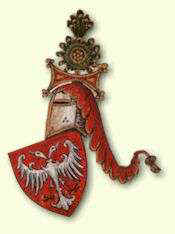 |
THE NEMANYICH DYNASTY
The dynasty took its name after its founder Stefan Nemanya, the first
independent Serbian ruler and the first Serbian saint. He was the youngest son
of the Rashka Grand Zhupan Zavida. In the 60s of the 12th century he
managed to push his brothers Tihomir, Stracimir and Miroslav into peripheral
areas of the Rashka state, and take over his fatherís title. Nemanyaís
middle son and successor Stefan, the first Serbian crowned king, continued his
fatherís internal policy, never letting the descendants of other family
branches get independence in the regions under their administration. Strong
economic progress, in the first place in mining and trade, was characteristic
for the reign of Stefan Urosh I. Strong cental administrative power is also
characteristic for the reign of his successor Stefan Urosh II Milutin. In his
time not only the ruler but his feudal lords as well showed tendencies toward
conquering other territories. These tendencies were particularly distinct during
the reign of Stefan Dushan who crowned his conquests by proclaiming the
Patriarchate in 1345, and himself an emperor in 1346. During his reign the
Statute Book was proclaimed, the codification of which was based on the codes of
the Byzantine emperor Justinian. Dushanís successor Urosh did not have the
political talent of his predecessors. In the course of his reign many regions
united by Emperor Dushan seceded. It resulted in decline of the Serbian Empire,
and various powerful local rulers tried to establish their own dynasties. Deeply
religious and devoted to Orthodoxy, all rulers of the Nemanyich dynasty were
great donors, and erected all over Serbia many impressive monasteries and
churches, such as Studenica, Djurdjevi Stupovi, Zhicha, Dechani, Grachanica,
Milesheva, Sopochani . . . as well as the only Serbian monastery on Mount Athos
- Chilandar.
|
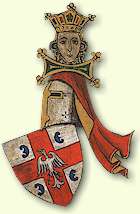 |
THE MRNYAVCHEVICH DYNASTY
The medieval feudal lords and dynasty
Mrnyavchevich is known under that name from later sources, from the 15th century
onwards. Unlike historical sources, the oral tradition often mentions them
either as totally negative or totally positive characters. Brothers Vukashin and
Uglyesha were portrayed as greedy feudal lords and usurpers, while Vukashinís
son Marko (the Prince) became the Serbian national hero.
|
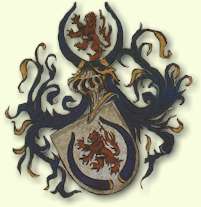 |
THE BRANKOVICH DYNASTY
When Prince Stefan Lazarus died in 1427, without a heir, he was succeeded by
Djuradj Brankovich, on the basis of family relations. His reign was marked by
constant hard fighting against the Turks. Thanks to his diplomatic talents, as
well as the ability to take advantage of weaknesses of his rivals and seniors,
the Hungarians and Turks, but above all to the strong economic position which
ensured him the title of one of the richest men of Europe of the time, Djuradj
managed to extend the independence of the Serbian state for a few more decades.
After his death in 1456, his son Lazarus accessed the throne. He tried to follow
his fatherís policy, but was stopped by his sudden death in 1458. He left no
male heirs behind.
|
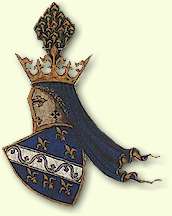 |
THE KOTROMANICH DYNASTY
The Kotromanich dynasty ruled over Bosnia from the beginning of the 13th century
till 1463. The Kotromanich Family linked to the Serbian ruling family at the
close of the 13th century, by marriage of Stefan, son of the Bosnian Governor
Tvrtko, to Elisabeth, daughter of the Serbian King Dragutin. Governor Tvrtko
Kotromanich took advantage of this family relationship and got himself crowned
by the "double wreath", a King of Bosnia and Serbia, in 1377.
The Kotromanich family restored their relationship with the Serbian ruling
dynasty at the beginning of the second half of the 16th century. It happened
when the crown-prince Stefan Tomashevich married Helen, daughter of the Serbian
Despot Lazarus.
When Mehmet II came to the walls of Smederevo, the Kotromanich Family did not
give any resistance, but started negotiations of surrendering the city. After
the negotiation had been reached, the Bosnians were allowed to leave the
fortress together with the newly appointed Despot and his wife. Smederevo was
deserted on June 20, 1459, and the Turks entered it. It was the end of the
Serbian despotic power.
|
 |
THE LAZAREVICH FAMILY
At the time of reign of the last ruler of the Nemanyich Family Ė Urosh the
Feeble - a few powerful feudal lords tried to found their own dynasties:
Balshich, Voynovich-Altomanovich, Mrnyavchevich, Deyanovich, Rastislalich,
Hrebelyanovich. The most powerful among them was Prince Lazarus Hrebelyanovich,
who became their supreme lord about 1375. Lazarus Hrebelyanovich managed to
unite many territories in the region of the Big Morava river basin. He acted as
a mediator in reconciliation of the Serbian and Greek churches, who had been in
schism ever since proclamation of the Serbian Patriarchate. He was killed in the
Kosovo Field battle in 1389, commanding the Serbian army against the Turkish
Sultan Mourat II.
Lazarus was succeeded by his son Stefan, who had a strong personality and will.
Stefan was simultaneously Turkish and Hungarian vassal, and he managed to
consolidate economic progress of the country, as well as to extend his property
in Zeta, at the expense of the Bosnian state. After the battle of Angora, he got
the despotic title from the Byzantine Emperor, and the Serbian state was a
despotic state starting from that date.
|
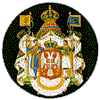 |
THE KARADJORDJEVICH DYNASTY
The dynasty Karadjordjevich is the
last Serbian dynasty. Rulers of this dynasty originate from the national leader
of the First Serbian Uprising in 1804, Djordje (george) Petrovich - Karadjordje.
|
 |
THE OBRENOVICH DYNASTY
The Obrenovich dynasty ruled over
Serbia twice: first from 1815 to 1842, with three different Princes on the
throne - Milosh, Milan and Michael; the second period lasted from 1858 to 1903,
when Michael ruled again, then King Milan and eventually King Alexander. Rulers
of this lineage originate from Milosh, one of the most distinguished leaders of
the First Serbian Uprising.
|


![]()
DYNASTIES
OF MEDIEVAL RULERS
![]()